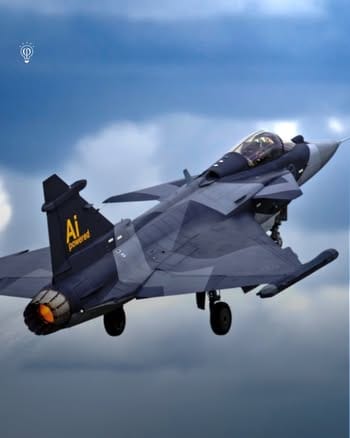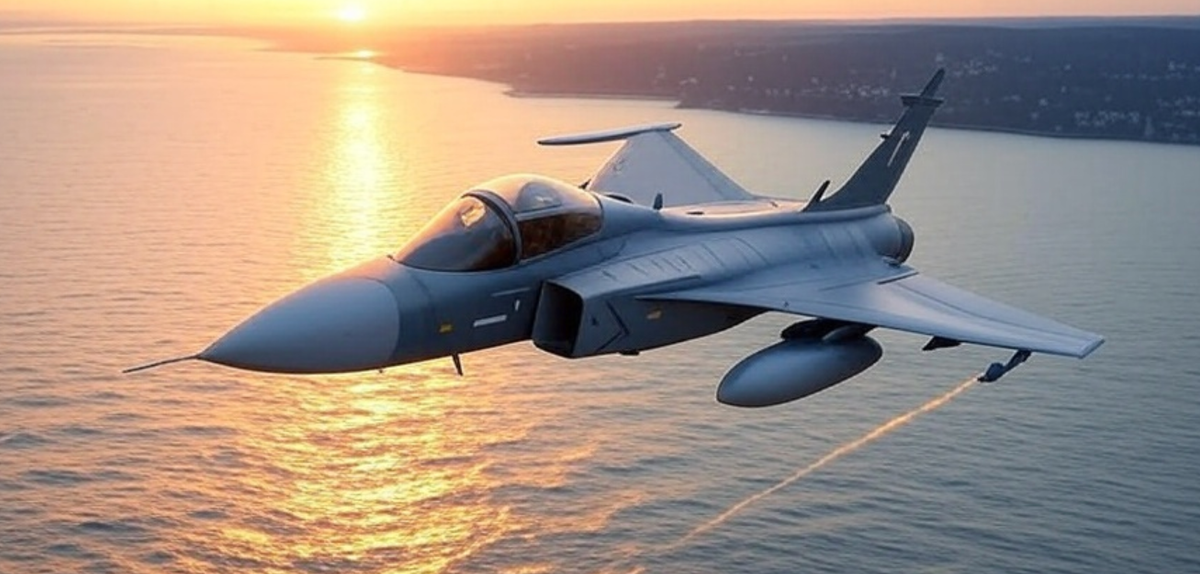
On a crisp morning above the Baltic Sea, Sweden marked a historic milestone in military aviation. The nation’s advanced Gripen E fighter jet, enhanced with artificial intelligence, successfully completed a series of test flights, demonstrating its ability to soar and engage in combat without a human pilot. This groundbreaking achievement, part of the collaborative "Project Beyond" initiative by Saab and Helsing, showcases the future of warfare where machines and intelligence converge. As of 12:03 PM WIB on Tuesday, July 1, 2025, the world watches as this technological leap redefines aerial dominance.
The Dawn of Autonomous Combat
The centerpiece of this innovation is Centaur, an AI system developed by Helsing, seamlessly integrated into the Gripen E’s sophisticated avionics. The first of three test flights took place on May 28, 2025, with subsequent missions on June 3, marking a rapid progression from concept to execution in less than six months. During these flights, Centaur took full control, executing complex maneuvers in a beyond-visual-range (BVR) combat environment. The AI’s performance was put to the ultimate test when it engaged in simulated dogfights against a human-piloted Gripen D, proving its capability to track, evade, and recommend missile shots with precision.
What sets this achievement apart is the absence of a safety net typically required for experimental flights. Unlike traditional test platforms that rely on restricted military ranges or experimental aircraft, the Gripen E’s modern architecture allowed Centaur to operate within an operational fighter jet. This flexibility underscores Saab’s vision of blurring the lines between current technology and future possibilities, where software updates can evolve capabilities at an unprecedented pace.
The Technology Behind Centaur
Centaur’s success hinges on advanced algorithms rooted in scaled reinforcement learning, a method that enables the AI to adapt and improve through repeated simulations. This approach has endowed Centaur with decision-making skills rivaling those of seasoned human pilots, processing real-time data from the Gripen E’s onboard sensors to navigate dynamic combat scenarios. During the June 3 flight, the AI demonstrated its adaptability by varying engagement distances, speeds, and angles, even performing effectively when command-and-control data was disabled—a testament to its robustness.
The integration process was remarkably swift, completed in under six months from initial planning to live flights. This speed is attributed to the Gripen E’s design, which separates hardware and software components, allowing for the rapid incorporation of cutting-edge technologies like Centaur. Saab’s engineers, led by figures like Peter Nilsson, emphasize that this modular approach eliminates the generational gaps seen in traditional aircraft development, replacing them with a continuous cycle of innovation.
A Pioneering Step in European Defense
The test flights represent a turning point for European defense, where nations seek to maintain a technological edge amid evolving global threats. Conducted over the Baltic Sea, a strategically significant region due to its proximity to NATO and Russian borders, the trials underscored the potential of autonomous systems to enhance military readiness. Stephanie Lingemann, Senior Director of the Air Domain at Helsing, hailed the flights as a “pioneering step in autonomous air combat,” signaling a new era for the continent’s air forces.
Marcus Wandt, Chief Innovation Officer and test pilot at Saab, who piloted the Gripen E during some phases, shared his awe at witnessing the future unfold. “This is air combat happening right now, in Europe,” he remarked, highlighting the project’s rapid timeline from scenario definition to successful flight. The presence of a human pilot as a backup during the tests ensured safety, but Centaur’s autonomous execution of maneuvers and engagements marked a clear departure from human dependency.
Implications for Warfare
The successful integration of Centaur into the Gripen E opens a Pandora’s box of possibilities for modern warfare. The AI’s ability to process vast amounts of sensor data in real time allows it to respond to threats faster than a human could, potentially shifting the balance in aerial engagements. In the simulated dogfights, Centaur not only tracked its opponent but also evaded disadvantageous positions, showcasing a tactical acumen honed through what Saab equates to 50 years of human pilot experience compressed into its training.
This development also raises questions about the role of human pilots in future conflicts. While the Gripen E with Centaur is marketed as ready for “mature” customers—those already operating the jet variant—additional refinements are expected. The combination promises to augment human capabilities rather than replace them entirely, at least in the near term, with pilots retaining oversight and intervention rights.
Challenges and Ethical Considerations
The advent of AI-powered combat aircraft is not without challenges. The reliability of autonomous systems in unpredictable combat scenarios remains a concern, as does the ethical debate surrounding machines making life-and-death decisions. The Baltic Sea trials included rigorous testing to ensure Centaur’s trustworthiness, but experts acknowledge that further validation is needed before widespread deployment. Saab and Helsing are committed to addressing these issues, leveraging the Gripen E’s operational framework to refine the AI through iterative updates.
Cybersecurity is another critical factor. An AI-controlled jet represents a high-value target for hacking, necessitating robust defenses to protect against digital interference. The collaboration between Saab’s engineering prowess and Helsing’s AI expertise aims to create a system resilient to such threats, ensuring that Centaur remains a reliable asset rather than a vulnerability.
A Global Context
Sweden’s achievement comes at a time when nations worldwide are investing heavily in autonomous military technologies. The United States and China have been at the forefront with projects like the X-47B and various drone programs, but Europe’s progress with the Gripen E signals a competitive resurgence. The Baltic Sea, a geopolitical hotspot, provides a fitting stage for this demonstration, reinforcing Sweden’s strategic importance despite its non-NATO status until recent years.
The success of "Project Beyond" also aligns with a broader trend of accelerating technological integration in defense. As conflicts grow more complex, the demand for systems that can operate with minimal human input is rising. The Gripen E’s market-ready status positions Sweden to lead this charge, potentially attracting interest from allied nations seeking to modernize their air forces.
Looking to the Future
As the dust settles on these historic flights, the focus shifts to the next phase of development. Saab and Helsing plan to expand Centaur’s capabilities, exploring its application in multi-aircraft formations and integrated battlefield scenarios. The goal is to create a networked force where AI enhances coordination and response times, offering a decisive advantage in future conflicts.
For Sweden, this milestone is a source of national pride, showcasing its ability to innovate at the cutting edge of technology. The Baltic Sea trials are just the beginning, with plans to conduct further tests under varied conditions to solidify Centaur’s role in the Gripen E’s arsenal. The project’s success could pave the way for a new generation of fighter jets, where human ingenuity and artificial intelligence work in tandem to secure the skies.
A New Horizon in Aviation
On this Tuesday, July 1, 2025, as the world digests the implications of Sweden’s AI-powered Gripen E, the future of aerial combat feels both exhilarating and uncertain. The seamless dance of Centaur over the Baltic Sea is a harbinger of change, promising enhanced safety, efficiency, and strategic superiority. Yet, it also invites reflection on the balance between technological advancement and human oversight.
As engineers refine the system, policymakers debate its ethical boundaries, and pilots prepare to adapt to this new reality, one thing is clear: the skies above Sweden have become a testing ground for the next chapter in military history. With each successful maneuver, the Gripen E and Centaur edge closer to reshaping how wars are fought—and won—ushering in an era where intelligence, not just firepower, defines victory.


